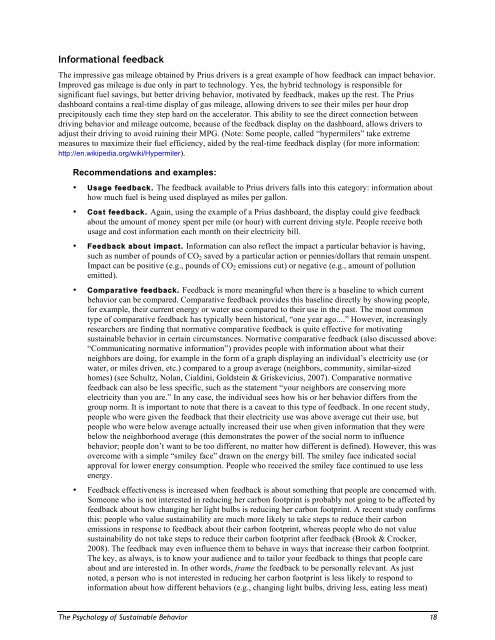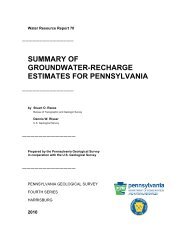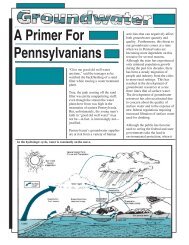The Psychology of Sustainable Behavior - Minnesota Pollution ...
The Psychology of Sustainable Behavior - Minnesota Pollution ...
The Psychology of Sustainable Behavior - Minnesota Pollution ...
Create successful ePaper yourself
Turn your PDF publications into a flip-book with our unique Google optimized e-Paper software.
Informational feedback<br />
<strong>The</strong> impressive gas mileage obtained by Prius drivers is a great example <strong>of</strong> how feedback can impact behavior.<br />
Improved gas mileage is due only in part to technology. Yes, the hybrid technology is responsible for<br />
significant fuel savings, but better driving behavior, motivated by feedback, makes up the rest. <strong>The</strong> Prius<br />
dashboard contains a real-time display <strong>of</strong> gas mileage, allowing drivers to see their miles per hour drop<br />
precipitously each time they step hard on the accelerator. This ability to see the direct connection between<br />
driving behavior and mileage outcome, because <strong>of</strong> the feedback display on the dashboard, allows drivers to<br />
adjust their driving to avoid ruining their MPG. (Note: Some people, called “hypermilers” take extreme<br />
measures to maximize their fuel efficiency, aided by the real-time feedback display (for more information:<br />
http://en.wikipedia.org/wiki/Hypermiler).<br />
Recommendations and examples:<br />
• Usage feedback. <strong>The</strong> feedback available to Prius drivers falls into this category: information about<br />
how much fuel is being used displayed as miles per gallon.<br />
• Cost feedback. Again, using the example <strong>of</strong> a Prius dashboard, the display could give feedback<br />
about the amount <strong>of</strong> money spent per mile (or hour) with current driving style. People receive both<br />
usage and cost information each month on their electricity bill.<br />
• Feedback about impact. Information can also reflect the impact a particular behavior is having,<br />
such as number <strong>of</strong> pounds <strong>of</strong> CO 2 saved by a particular action or pennies/dollars that remain unspent.<br />
Impact can be positive (e.g., pounds <strong>of</strong> CO 2 emissions cut) or negative (e.g., amount <strong>of</strong> pollution<br />
emitted).<br />
• Comparative feedback. Feedback is more meaningful when there is a baseline to which current<br />
behavior can be compared. Comparative feedback provides this baseline directly by showing people,<br />
for example, their current energy or water use compared to their use in the past. <strong>The</strong> most common<br />
type <strong>of</strong> comparative feedback has typically been historical, “one year ago....” However, increasingly<br />
researchers are finding that normative comparative feedback is quite effective for motivating<br />
sustainable behavior in certain circumstances. Normative comparative feedback (also discussed above:<br />
“Communicating normative information”) provides people with information about what their<br />
neighbors are doing, for example in the form <strong>of</strong> a graph displaying an individual’s electricity use (or<br />
water, or miles driven, etc.) compared to a group average (neighbors, community, similar-sized<br />
homes) (see Schultz, Nolan, Cialdini, Goldstein & Griskevicius, 2007). Comparative normative<br />
feedback can also be less specific, such as the statement “your neighbors are conserving more<br />
electricity than you are.” In any case, the individual sees how his or her behavior differs from the<br />
group norm. It is important to note that there is a caveat to this type <strong>of</strong> feedback. In one recent study,<br />
people who were given the feedback that their electricity use was above average cut their use, but<br />
people who were below average actually increased their use when given information that they were<br />
below the neighborhood average (this demonstrates the power <strong>of</strong> the social norm to influence<br />
behavior; people don’t want to be too different, no matter how different is defined). However, this was<br />
overcome with a simple “smiley face” drawn on the energy bill. <strong>The</strong> smiley face indicated social<br />
approval for lower energy consumption. People who received the smiley face continued to use less<br />
energy.<br />
• Feedback effectiveness is increased when feedback is about something that people are concerned with.<br />
Someone who is not interested in reducing her carbon footprint is probably not going to be affected by<br />
feedback about how changing her light bulbs is reducing her carbon footprint. A recent study confirms<br />
this: people who value sustainability are much more likely to take steps to reduce their carbon<br />
emissions in response to feedback about their carbon footprint, whereas people who do not value<br />
sustainability do not take steps to reduce their carbon footprint after feedback (Brook & Crocker,<br />
2008). <strong>The</strong> feedback may even influence them to behave in ways that increase their carbon footprint.<br />
<strong>The</strong> key, as always, is to know your audience and to tailor your feedback to things that people care<br />
about and are interested in. In other words, frame the feedback to be personally relevant. As just<br />
noted, a person who is not interested in reducing her carbon footprint is less likely to respond to<br />
information about how different behaviors (e.g., changing light bulbs, driving less, eating less meat)<br />
<strong>The</strong> <strong>Psychology</strong> <strong>of</strong> <strong>Sustainable</strong> <strong>Behavior</strong> 18













